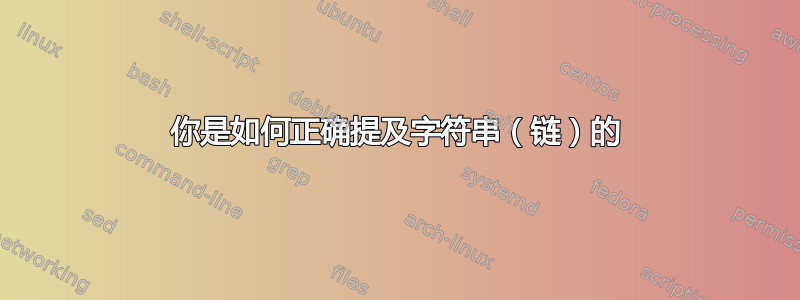
我正在写论文,在我的文档中有几个段落提到了字符串,你是如何正确地提到字符串(链)的?例如:
Si termina con $G$ no puede
Si termina con 'G' no puede
Si termina con "G" no puede
答案1
如果必须将字符串并列,一个字符串与另一个字符串并列,就像 DNA 的情况一样,那么使用等宽字体是有意义的,以避免因字母宽度差异以及字距调整而引起的错位。
rm这里,我以和字体并列显示了相同的 2 个字符串tt。尽管两个字符串的顶部和底部包含完全一样字母和相同数量,字母字距调整本身就会导致罗马字符串不匹配。该问题由tt
\documentclass{article}
\usepackage{stackengine}
\renewcommand\stackalignment{l}
\begin{document}
\stackunder{ATGCATGCATGCATGCATGCATGCATGC}{TACGTACGTACGTACGTACGTACGTACG}\bigskip
\ttfamily
\stackunder{ATGCATGCATGCATGCATGCATGCATGC}{TACGTACGTACGTACGTACGTACGTACG}
\end{document}
答案2
在我看来,编写字符串链并没有真正正确的方法或最佳实践。更重要的是让文档的读者知道字符串格式的含义。这意味着一应该为文档定义自己的字符串格式并解释其含义。
在您的问题中,您写道$G$。这通常是一个数学常数。我也不会使用引号,因为这样您就不知道它是引号还是字符串链。
以下是我处理你的方法:
\documentclass{article}
\usepackage{tikz}
\usetikzlibrary{ducks}
\newcommand{\technical}[1]{\textbf{#1}}
\newcommand{\coding}[1]{\texttt{#1}}
\newcommand{\fancy}[1]{%
\tikz{\duck}%
~#1~%
\tikz{\duck}%
}
\begin{document}
\section*{String formatting definitions}
\begin{itemize}
\item Technical string are formatted bold in document. Example: \technical{TeX.SX}
\item All DNA Coding is done in monospace \coding{ATGC}
\item \fancy{I'm a fancy duck string}
\end{itemize}
\end{document}
这种方法有两个优点:
- 读者可以查找字符串格式的含义
- 您可以轻松地重新定义整个文档的字符串格式



